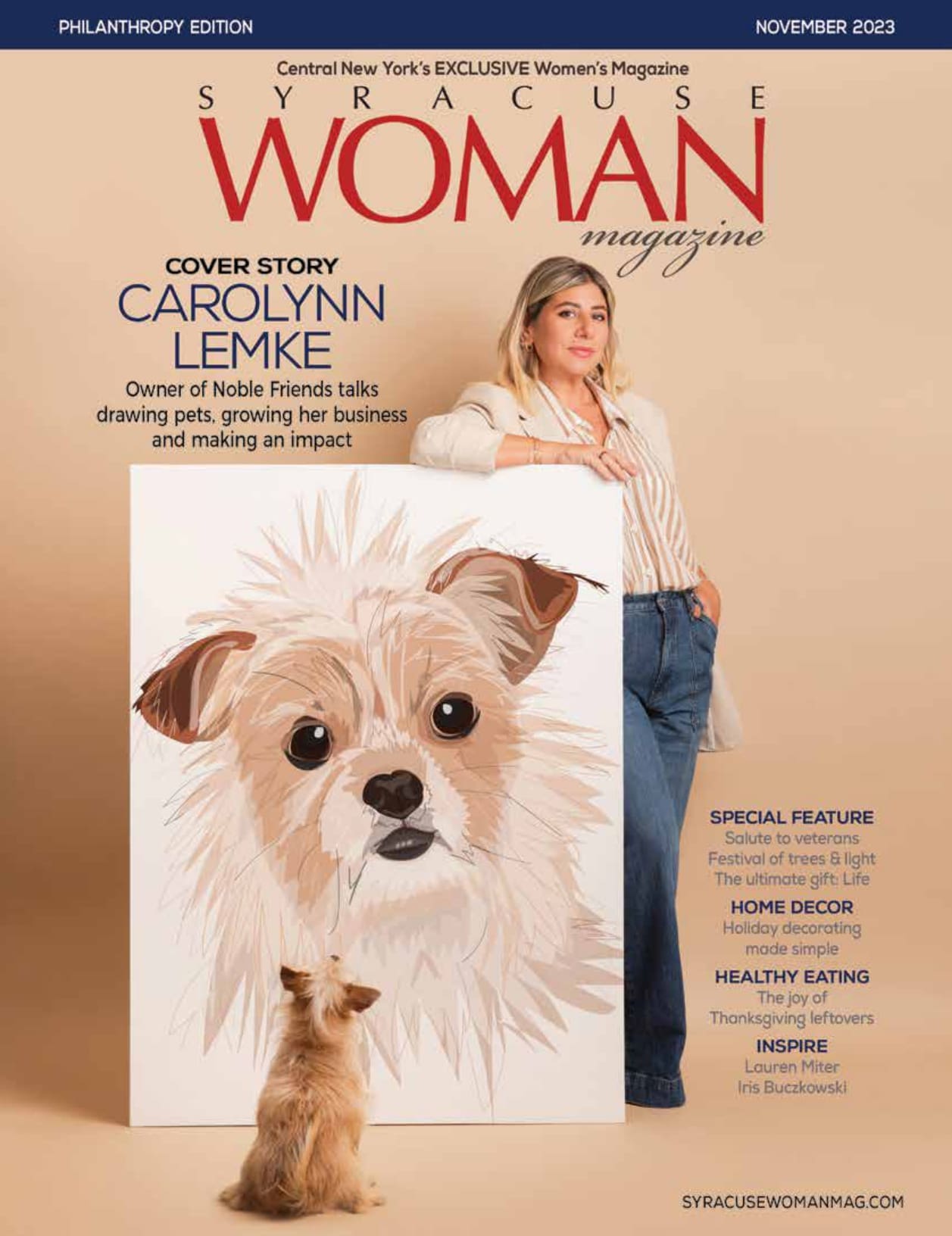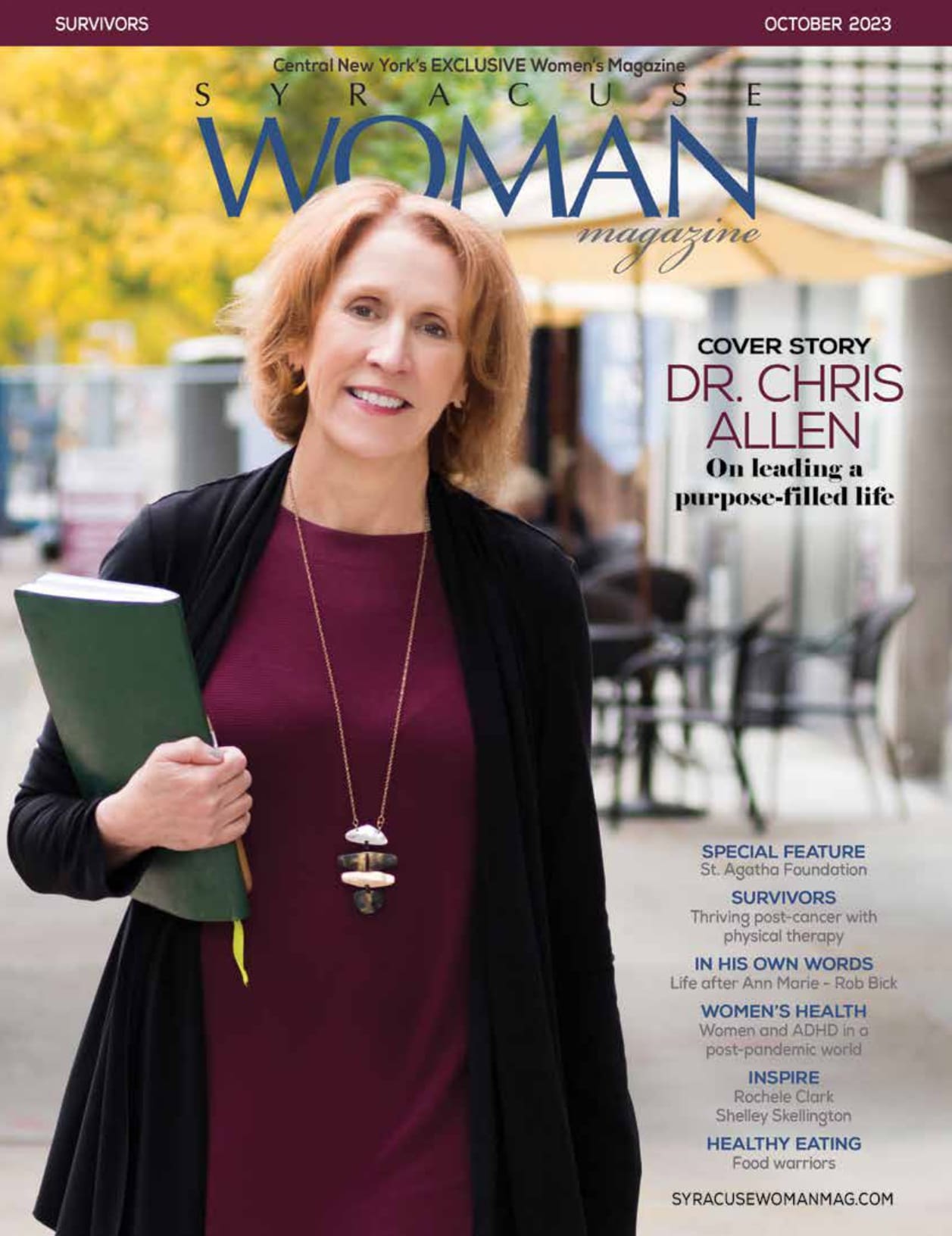By Ken Sturtz
A stillness swept over the church as the congregation sat enthralled by a visitor’s story of how he’d been called upon to make a life-changing decision to leave a career in business and devote himself to missionary work. Then he offered a piece of advice: if you feel that God has something else planned for you, don’t ignore it. Seek it out.
Carolyn Hendrickson felt her heart racing as she listened.
“I knew that something spoke to me that day,” she says. “I didn’t know if I was supposed to become a missionary or what. I just knew in my heart there was something else for me.”
She spent months reflecting on his words. It hardly seemed like the right time to make a big change. Hendrickson, of Liverpool, was 37 years old, had already worked in financial services for 14 years and was making a good living. Her husband was in the middle of a career as a teacher. She eventually realized she’d never figure out what she was looking for if she didn’t give herself a push, so she gave her notice.
With no job and unsure what was next, Hendrickson began visiting people in the business community, asking why they did the work they did and what they loved about it.
A business owner asked if she’d ever volunteered. Hendrickson had volunteered at the Rescue Mission in Syracuse and that got her thinking about her values and what she really cared about. She began sharing her resume. One day in 1997 she received a call from Clarence Jordan, the longtime executive director of the Rescue Mission. He thought she’d be a good fit for a development position.
“I think I kind of instantly knew it was a fit way back when,” she says.
Nearly a quarter of a century later, she believes that day in the church was a turning point. Through her work – first at the Rescue Mission and now at The Upstate Foundation – Hendrickson has raised millions of dollars and helped connect thousands of donors to meaningful causes. And philanthropy has become much more than a job.
“For me philanthropy is a lifestyle,” she says. “My goal every day is to help our community.”
That can mean helping financial resources get to the right place where they can make a difference, but it also includes a hands-on approach. For example, Hendrickson knew she wanted to help young married couples. So, she joined a program at her church meant to help young mothers learn to cook, mange a household and navigate marriage. That allowed her to share her cooking skills as well as her life experience. Hendrickson volunteers with several other charities and sits on the board of David’s Refuge.
In many ways her dedication to philanthropy is an extension of her upbringing. Her parents were regular churchgoers and espoused Christian values to Hendrickson and her siblings, including the importance of helping others. Her parents led by example. If someone new moved into the community, they’d be knocking on their door to welcome them. If someone was sick or in need, they’d bring food to their house.
Part of her parents’ philosophy included the notion that a certain amount of do-gooding was simply expected of people and wasn’t cause for boasting.
“You don’t stand on the street corner and tell other people what you do,” she says. “It is not about me, it’s about what I can do to help others and that’s what drives me.”
Philanthropy of course still requires development professionals to raise money to help people connect with causes that matter to them.
“It isn’t always about the money,” she says. “Money makes thing happen, but people want to know that you care; you have to believe in your work.”
Successful development professionals need to have a strong work ethic, good communication skills and a certain amount of raw enthusiasm. Hendrickson rises at 6 a.m. and is in the office by 8 a.m., calling donors and writing thank you notes (in a digital world, handwritten notes are especially appreciated, she says).
Much of Hendrickson’s experience and training in financial services served as useful training for a career in philanthropy – in particular, the ability to connect with people, understand who they are and what’s important to them, and develop relationships.
It’s important to understand the balance between development and relationship-building. Some donors are comfortable writing a check with very little interaction, while others have become close friends over the years, Hendrickson says. Most people are somewhere in the middle, though none wants to be treated like a number.
Stewardship matters, Hendrickson says, which is why donors don’t hear from her just when she’s asking for money. But asking for money can be one of the most challenging hurdles for new development professionals. Hendrickson is often asked if she hates asking for money.
“When you know the cause and there’s an alignment for the donor it’s up to them, it’s their decision,” she says. “I see myself as a connector. I want to help people connect with something that’s meaningful to them.”
Raising money for even the worthiest causes can lead to burnout. It’s easy enough to lose sight of the mission and see only the dollars and cents.
Whenever she needs to stay grounded, Hendrickson thinks back to her early days at the Rescue Mission when a homeless man came in during the dead of winter in an old pair of cowboy boots.
There were holes in the bottom of the boots and his socks, which showed through the holes, were caked with ice. He was freezing and his feet had frostbite. He just wanted a better pair of boots or shoes. The Rescue Mission provided him with a pair, which he gratefully accepted. Afterward Hendrickson plucked the old boots from the trash and placed them in her office.
“I don’t ever want to forget the impact of that man feeling like somebody helped him,” she says. “That act of him getting a pair of new used winter boots, that might have been the most philanthropic thing we could have done at that time.”
Experiences such as that were not uncommon at the Rescue Mission, which among its other programs provides shelter and food to people in need. With a relatively small development team, Hendrickson, whose title was senior philanthropy officer, handled major gifts, planned giving and managed a multi-million-dollar capital campaign. Depending on the day she might find herself calling prospective donors, leading supporters on a tour or recruiting volunteers.
When she joined The Upstate Foundation a year ago as director of planned giving her focus narrowed considerably. The foundation primarily raises money for Upstate Medical University for things such as patient care, education of healthcare providers, scientific research and community health and well-being. It has more than $250 million in assets and more than 1,000 funds under management.
Hendrickson says the desire to leave a legacy gift can be the result of everything from gratitude for great care, an excellent education or a meaningful career, to supporting medical research or unmet patient needs.
“While the cause is different, people’s hearts and wanting to help, that element stays the same no matter where you are,” she says. “And I get the privilege of working with them.”
Hendrickson reflects on a couple who lost their only child to suicide. Their desire was to turn the tragedy into an opportunity to help other teenagers in the community. So, they established an endowment and a legacy gift to ensure others dealing with suicide will receive help.
“This is humbling beyond words, philanthropy in action,” she says.
Not all donors are interested in planned giving – some prefer to give everything away while they’re alive – and starting a conversation with donors about it is a delicate matter. Some people know exactly what they want while others have never thought about it.
Such gifts can be particularly exciting to work on because they are often the largest gifts someone has made and sometimes have the potential to be transformative. They’re also often the most meaningful because the donor typically has to sit down and put more thought and planning into it. It takes a certain kind of person to be comfortable with the knowledge that their gift doesn’t happen until they’re gone.
“They’re not alive to receive any accolades and to me that’s just one more statement about their philanthropic intent,” Hendrickson says. “Those to me are some of the most humbling experiences.”
Since that day in church decades ago Hendrickson has experienced numerous ups and downs, but says she never doubted her commitment to philanthropy. When she thinks back to all the donors she’s worked with and all the people they helped it fills her with a sense of wonder.
“Philanthropy is a wonderful career,” she says. “I am honored to be a small part of helping others fulfill their philanthropic goals and witnessing the difference their gifts make for others.”








You must be logged in to post a comment.